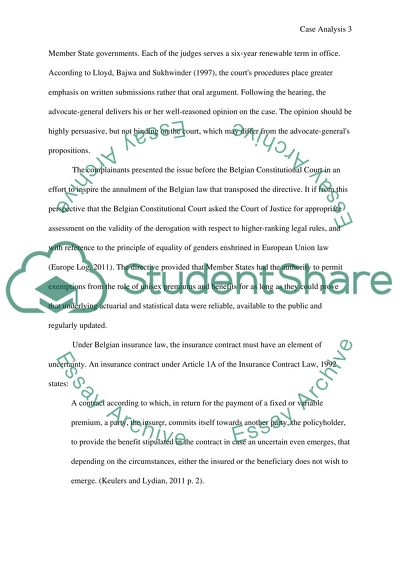Cite this document
(“European Court of Justices judgment Essay Example | Topics and Well Written Essays - 1750 words”, n.d.)
European Court of Justices judgment Essay Example | Topics and Well Written Essays - 1750 words. Retrieved from https://studentshare.org/law/1593376-critically-appraise-the-decision-of-the-european-court-of-justice-in-case-c-23609-association-belge-des-conssommateurs-test-achats-asbl-others-v-conseil-des-ministres
European Court of Justices judgment Essay Example | Topics and Well Written Essays - 1750 words. Retrieved from https://studentshare.org/law/1593376-critically-appraise-the-decision-of-the-european-court-of-justice-in-case-c-23609-association-belge-des-conssommateurs-test-achats-asbl-others-v-conseil-des-ministres
(European Court of Justices Judgment Essay Example | Topics and Well Written Essays - 1750 Words)
European Court of Justices Judgment Essay Example | Topics and Well Written Essays - 1750 Words. https://studentshare.org/law/1593376-critically-appraise-the-decision-of-the-european-court-of-justice-in-case-c-23609-association-belge-des-conssommateurs-test-achats-asbl-others-v-conseil-des-ministres.
European Court of Justices Judgment Essay Example | Topics and Well Written Essays - 1750 Words. https://studentshare.org/law/1593376-critically-appraise-the-decision-of-the-european-court-of-justice-in-case-c-23609-association-belge-des-conssommateurs-test-achats-asbl-others-v-conseil-des-ministres.
“European Court of Justices Judgment Essay Example | Topics and Well Written Essays - 1750 Words”, n.d. https://studentshare.org/law/1593376-critically-appraise-the-decision-of-the-european-court-of-justice-in-case-c-23609-association-belge-des-conssommateurs-test-achats-asbl-others-v-conseil-des-ministres.


